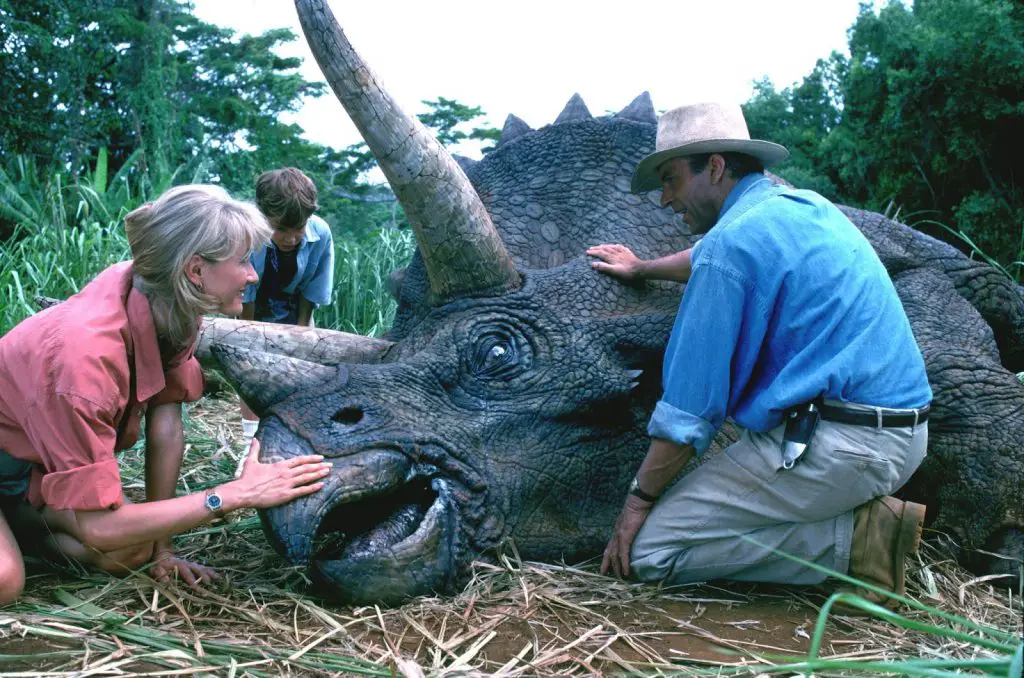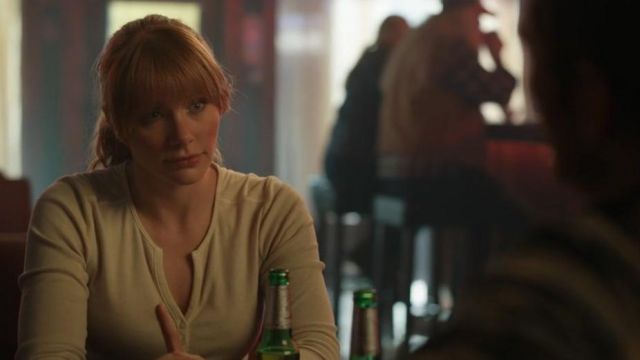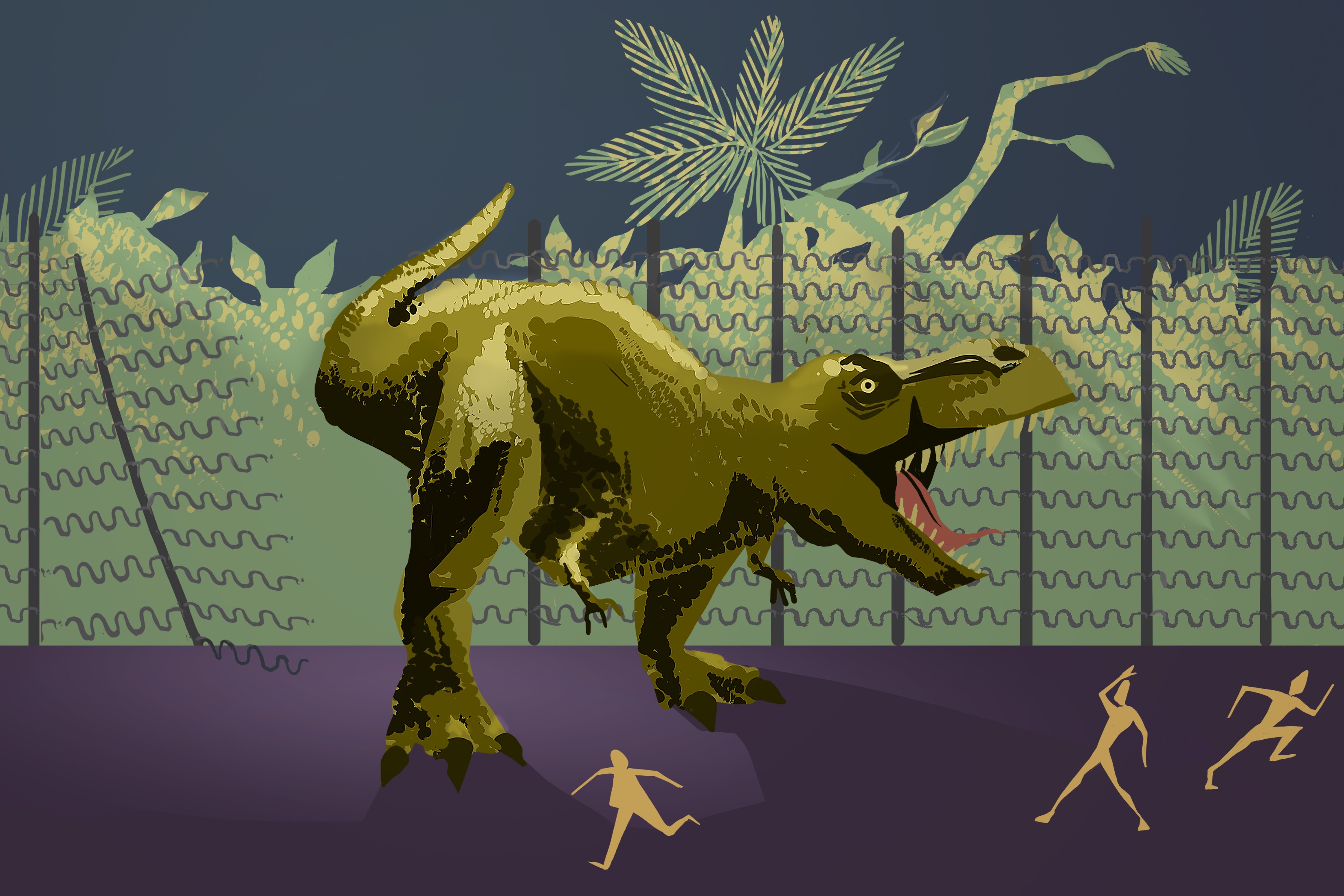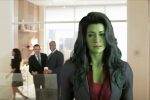Since its initial release in 1993, the “Jurassic Park” franchise has brought a myriad of powerful females to the big screen. From their intelligent scheming to their unrivaled brute strength, these women have held their own when prehistory has forced them into survival mode in the current era. Very few of the series’ male characters can hold a candle to their thick skin and razor sharp wit. They are a true rarity in cinema, even today.
Before I continue, though, you are aware I’m referencing the dinosaurs, right?
While the iconic T-rex and velociraptor squad are undoubtedly fierce, the human women struggle to compete. When plunged into life-or-death scenarios where composure and grit are the name of the game, some of the female characters are relegated to supporting roles in deference to their stereotypically strong male counterparts. Other women, however, refuse to surrender their potential and subsequently have a direct hand in the success and safety of the male-dominated party.
With the most recent installment, “Jurassic World: Fallen Kingdom,” presenting some new women for consideration, it’s the perfect time to celebrate (or condemn) each entry for its treatment of female characters. I can think of no better method than pitting them against each other. After all, in order for these prehistoric movies to stay alive in the current feminist climate, they have to illustrate gender equality better than their predecessors.
Because I intend to discuss each character’s role throughout the film series, major spoilers will arise. Tread with caution.
1. “Jurassic Park” (1993)
The original “Jurassic Park” film is leagues above the rest in its depiction of women, as well as every other area. This is almost entirely thanks to its leading lady: Ellie Sattler. An expert paleobotanist with equal parts intellect and self-assurance, Sattler, played by award-winning actress Laura Dern, is nothing short of a badass.
Even before the action begins, she acts entirely of her own volition. When friend and fellow scientist, Alan Grant, leaps out of the tour vehicle, Sattler isn’t far behind. Finding an ill Triceratops at the end of their path, she immediately pulls out her knowledge of plants to determine the cause. This results in a notorious shot with Sattler shoulder-deep in dinosaur excrement while all of the men are standing around in disgust. No one can question her drive. That’s for sure.

Moreover, Sattler rejects the traditional female role in a more direct sense. With dinosaurs running amok and no electrical power, she opts to venture outside the safety of the Visitor’s Center to remedy the latter issue. As Sattler is about to leave, the director of the park outright states that he should be the one to do it because of his gender. In response, she rolls her eyes and continues on her way. Say it with me, folks — films need more women like Ellie Sattler.
Not to be overshadowed, Lex Murphy, the granddaughter of park director John Hammond, has a couple of shining moments as well. Her status as a hobbyist computer hacker is instrumental in restoring the security systems and phone lines to the entirety of “Jurassic Park.” In addition, she is the only character in the film to successfully outsmart a velociraptor, one of the shrewdest species.
2. “The Lost World: Jurassic Park” (1997)
Admittedly, the two ladies in this film share several parallels with their counterparts from the original movie. Animal behaviorist Sarah Harding jumps at the opportunity to study dinosaurs up close and personal in an uncontained environment. Her thesis on the parenting styles of carnivores is the motivation behind every action, despite her boyfriend’s disapproval.
Harding never asks permission, choosing to always pursue her passion in whatever scenario she’s in. Traveling to a dinosaur-infested island with minimal protection? Worth it. Bringing a baby T-rex into the living quarters for medical attention? Done deal. In a medium littered with female characters that place their significant others above all else, she is a breath of fresh air. Furthermore, she isn’t in constant need of a savior; rather, she takes her life into her own hands on several occasions.
Regrettably, her ambition is a double-edged sword. Harding’s drive, while admirable, leads to some emotional decisions that jeopardize the rest of her research party. She rates second to Sattler, who always thinks before acting, on this basis alone.
As for Harding’s almost step-daughter, Kelly Malcolm, things could certainly be worse. Unlike other series kids, Malcolm elects to stow away and places herself in harm’s way to prove a point. Clearly, the same Achilles’ heel runs in the (kind of) family. Although, aside from a controversial scene in which she channels her inner gymnast to kick a velociraptor out a window, Malcolm doesn’t contribute to the plot. She does require a bit of rescuing, but I’ll give the writers a pass. Kids are automatically at a disadvantage when misfortune strikes.
3. “Jurassic World” (2015)
Honestly, I’m disappointed this entry didn’t merit a higher rank. The female protagonist, Claire Dearing, had the potential to be a success story. She’s the vice president of the multi-million dollar tourist attraction and displays a high level of devotion to her career. Throw a healthy amount of confidence and poise on top and “Jurassic World” should’ve had a winner.
Evidently, Dearing just had to enter a romantic relationship with a man (played by Chris Pratt) that treated her poorly in the past and continues to criticize her style and attitude throughout the film’s runtime. It must’ve been impossible to leave the cool, sarcastic lead without a love interest. The contrast between their personalities alienates her from the audience, as well.
Until she abandons the professional demeanor and dons a motherly façade, Dearing is considered unlikable. This sends a downright terrible message. Apparently, women are unpleasant individuals if they aren’t sickly sweet and don’t enjoy spending time around children. Gosh, I wish someone would’ve told me sooner.
On a better note, the movie allows her to assume the hero role on several occasions — even during the group’s final stand for survival. Dearing is gutsy enough to release a T-rex and lure it back to the center of the park in order to save her now-boyfriend and two nephews from another deadly carnivore. Dearing may be far from a feminist icon, but she is a standout when isolated from her male counterpart.
Hold up. I almost forgot about Dearing’s personal assistant. I’d analyze Zara Shealy’s character if I had anything to go on. Essentially, she complains about babysitting the children and gets sent to the belly of an aquatic mosasaur to atone. That’s all he wrote, folks. Literally, that’s it.
4. “Jurassic World: Fallen Kingdom” (2018)
The latter half of this film’s title is a good metaphor for why it ranks lower than its predecessor. “Fallen Kingdom” sees the return of former VP turned dinosaur rights activist Claire Dearing and her now ex-boyfriend. When the government refuses to take a stand on the protection of the dinosaurs, Dearing decides to handle it herself. Good to see her prior relationship didn’t rob her character of determination. Sadly, in this sequel, it steals just about everything else from her.
Most notably, Dearing is frequently sidelined so Grady can transform into a bonafide action hero. Despite being the character with the largest moral responsibility for the dinosaurs, she doesn’t take the actions to prove it. No saving the good guys by herself. No sticking it to the bad guys without a man beside her. Oh, and guess who falls back into an ill-fated romance? Stripping her of her heels for a majority of the film was a poor decision. In doing so, the director apparently also deprived her of all autonomy.

Viewers were also introduced to newcomer Zia Rodriguez, a paleo-veterinarian and member of Dearing’s “Dinosaur Protection Group.” Easily the sassiest addition to the series, Rodriguez tells off a handful of men for both doubting and misusing her expertise. She refuses to be left behind due to her gender when the team travels into the jungle. She gave an incredibly strong first impression, only to be thrown to the shadows for a bulk of the movie. I’ll call it a small win.
For once, I have a third woman to discuss. I know, right? Positively shocking. Young Maisie Lockwood might be the best child character in the “Jurassic Park” franchise as a whole. She is intelligent, curious and courageous in the face of wrongdoing.
Sure, Lockwood spends a fair amount of time being shielded by others, but what did you expect? Her insistence on learning the truth behind the dinosaurs’ fate and relaying it to capable adults is paramount to the triumph of the main cast. Lockwood takes more initiative than Dearing does, at least.
Frankly, “Fallen Kingdom” suffers because the writers shafted Dearing’s character to make room for more punching, shooting and general heroics from its “true protagonist.” As the other two ladies were separated from him for much of the movie, they miss out on screentime that could’ve bumped this entry ahead of its precursor.
5. “Jurassic Park III” (2001)
This last mention is not only dishonorable, but appalling. You’d think a “Jurassic Park” sequel with an appearance from Ellie Sattler would be higher on this list. I did, too. But, the treatment of the main female character was too atrocious to warrant it.
In regards to Sattler’s cameo, little has changed. She’s still a badass. Now married with a family, she manages to save the main group (from the comfort of her own home, no less) after they are left stranded on the breeding grounds for the original park. I’ll admit, I loved that Alan Grant used his cliché single call for help to contact Sattler. It portrays her as a capable guardian and, more importantly, as an equal. More films could benefit from this reversal of the “Damsel in Distress” trope.
Unfortunately, it’s all downhill from there. That brings me to Amanda Kirby, the only other woman in the film. After a parasailing trip goes awry and lands her son on a dinosaur-infested island, she and her ex-husband manipulate paleontologist Alan Grant into giving them a “tour” of the perimeter. It wouldn’t be a “Jurassic Park” movie if anything went according to plan, right?
Well, when the “you-know-what” hits the fan, nobody handles it worse than Kirby. Actually, no one in the entire franchise has handled a dinosaur outbreak worse — and every movie has young children in the cast. You may want to turn your volume down while watching “Jurassic Park III” because half of Kirby’s lines are screaming. That’s it. Not to mention, her screaming drags the entire group into a number of preventable deadly encounters. To add insult to injury, she never gets the opportunity to save herself from peril. Everyone else is liable for that task.
A perpetual victim is bad enough, but Kirby has no redeeming qualities to elevate her character beyond just plain annoying. Consequently, “Jurassic Park III” is sent straight to the bowels of this list for daring to construct the most irrational character in franchise history.
So, what to make of the series as a whole? As the years passed, the women of the Jurassic universe were at the mercy of a different set of writers, each with a unique outlook on their role. Some women emerged as brilliant examples of bravery and poise while others deserve to fade into obscurity.

















